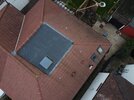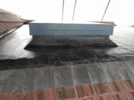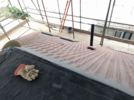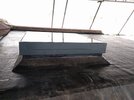- Joined
- 26 Aug 2016
- Messages
- 6,833
- Reaction score
- 1,011
- Country

Hi all, thanks in advance for any comments or replies to this worrying issue.
I noticed some mould on the underside of the flat roof part of the loft. It was built and covered in fibreglass 5 years ago.


I thought it was condensation at first but after the warm (and rainy) weather it's still looking damp.
Knowing the builder, it will be a roof leak (in 4 places) but I want an opinion before I specify a replacement.
It's a two storey house with a flat part at the very top of the pitched roof, so access is not possible for me to look outside.

What do people think? And any advice on a specification to replace it?
I noticed some mould on the underside of the flat roof part of the loft. It was built and covered in fibreglass 5 years ago.
I thought it was condensation at first but after the warm (and rainy) weather it's still looking damp.
Knowing the builder, it will be a roof leak (in 4 places) but I want an opinion before I specify a replacement.
It's a two storey house with a flat part at the very top of the pitched roof, so access is not possible for me to look outside.

What do people think? And any advice on a specification to replace it?



